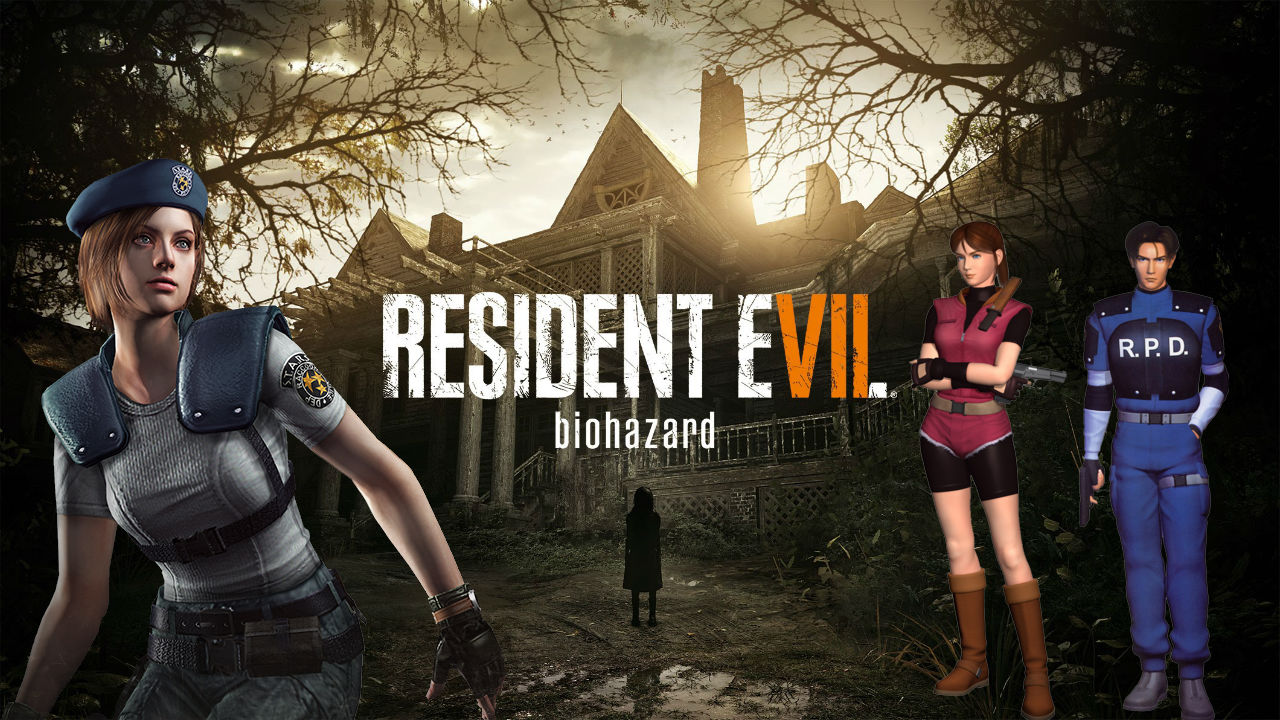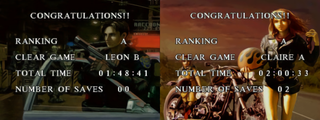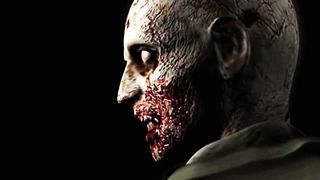The Resident Evil series proves that your game doesn’t have to be gigantic to endure

Resident Evil 2 has a single true ending and it is spectacular. Rookie cop Leon Kennedy and ‘biker with a heart of gold’ Claire Redfield ride out of Raccoon City on a secret, underground train as the city explodes from two ends. That’s right: Raccoon City blows up twice at the same time, once from the US government bombing it from above to sterilize the zombie outbreak and again from below, where the massive Umbrella lab running through its guts self-destructs. Get through the final boss - scientist William Birkin basically morphs into a ravenous wall of suppurating eyes and jaws right at the end - and our heroes escape. If you want to hear the cheese whiz rock song roll over the end credits, though, you basically have to play the same game twice. That’s no bad thing; the whole Resident Evil series proves that it’s worth making games so that they can be replayed rather than last forever.
Scenario A and B are different in Resident Evil 2, it’s true. Depending on which character you play first, the second will have to solve tweaked puzzles and find key items in different places. They’ll also be pursued by a new persistent enemy, the Tyrant, who even leads you to a couple of new environments between the lab and police department you’re trying to escape. On the whole, though, the game is the same; same environments, mostly the same puzzles, same monsters trying to eat your parts. The two scenarios were just a new way to spin the replayability built into the first Resident Evil. Rather than two scenarios, that game had multiple endings depending on how long it took you to finish the game and how you decided to behave with certain characters like Barry Burton and Rebecca Chambers. Both Resident Evil 1 and 2 reward faster play times with unlockable weapons and costumes you can only access on the next playthrough.

This is the secret success of Capcom’s enduring horror series. Even Resident Evil 7, its brilliant rebirth on PlayStation 4, is short compared to most modern blockbusters. Playing through that game takes about 8 to 10 hours on ‘Normal’ difficulty, or about a quarter of the time it takes to play Uncharted 4 or one-seventh of behemoths like Metal Gear Solid 5. Even though most people don’t finish games at all - less than half of Mass Effect, Batman, Elder Scrolls players ever see the credits roll - the perception that a game is short is often a knock against its value to people spending their hard earned cash. This is in part why open world games have boomed in recent years; the bigger the game, the more sidequests packed in, the easier the sell to an audience looking for something to last. Capcom’s understood for 20 years, though, that you don’t have to make your game gigantic to make it last. By making a game short enough that even a casual player can blast through it, then promising a subtly tweaked adventure on the next time through, even a familiar that doesn’t hold anymore surprises can become incredibly alluring.
Resident Evil 2’s true ending is just one effective carrot on the end of the stick. That game taps into a couple of gaming impulses that make replaying it powerful. If you play through in under 2.5 hours and don’t save frequently, you can unlock a rocket launcher or gatling gun with infinite ammunition, making the otherwise stressful survival game into a cathartic shooting gallery. The push to get those unlockables appeals to a completist, but also the speedrunning mindset; this time I’m going to play through just a little bit faster, this time I’m going to have a perfect run. Resident Evil 7 does the same thing in turn. Beat the game and you unlock the Albert, a powerful weapon without the limitations of the pistols and shotguns you find the first time through, and another tool that increases the effectiveness of your defense moves. They encourage you to dive back in and wail on the gross, toothy monsters that were a source of stress before. And by playing through a second time, you become even more efficient at beating the game, opening up even more items for speedier playthroughs.

Pragmatically speaking, creating a smaller game like the best Resident Evils - and designing it to be replayed - is more cost effective. There’s simply less stuff to physically build into the game world and ideally it takes less time to develop. Resident Evil 7 itself was finished in just about four years by 120 people, compared to Resident Evil 6 which took just three years to finish but a staff of more than 600 to complete. The benefits of a smaller, replayable game are about more than cost, though. The sprawling monotony and constant string of explosions in Resident Evil 6 - I lost count of how many helicopters blew up in the game after the seventh came crashing down - over 40 hours leave the game as mushy and indistinct as its melting, defeated enemies. Stand it up next to compact spaces like Resident Evil HD’s Spencer Mansion, Resident Evil 2’s RCPD, or the Baker farm in RE7 and it can’t compete. Those small spaces are rife with detail. Each room is memorable, and they stick more and more in your mind after each subsequent playthrough. The first time I sat in the Baker’s living room in RE7, I was terrified. The second time, I remembered the layout and was already making plans on what to do next.
Not every game needs to be Resident Evil. In fact, forcing players to replay parts of your game can be an enormous turn off. The aforementioned Metal Gear Solid 5 pulls a similar trick to Resident Evil 2, forcing you to play through multiple missions in order to see its true finale, but in making it a requirement (especially at the end of an already long game), it feels like unnecessarily drawing out the experience. Its model could have made merely good games into great ones. I’ll never replay all 17 hours of Alien: Isolation, because the back half of that game is unnecessary padding on a taut, merciless first ten hours. Even if it did end after those perfect first ten hours, though, there’s nothing to entice me back into Ripley’s fight for survival. The modifications, the change in perspective brought on by Resident Evil’s unlockable weapons and speed challenges, are what’s missing and many games would be wise to learn from them.
Sign up to the 12DOVE Newsletter
Weekly digests, tales from the communities you love, and more

A new Resident Evil reboot movie is in the works with Barbarian's director at the helm, and it sounds like it'll be the first full-blown horror movie in the series' history

Silent Hill 2 and Resident Evil 2's introductory sequences showcase two different approaches to the survival horror remake, and both of them are valid
Most Popular


